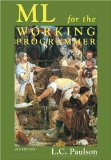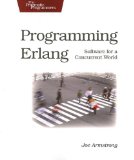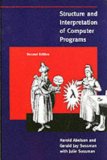Imperative programming languages—such as C++, Java, Perl and assembly—are by far the most common. They all lie fairly close to the underlying computer architecture by executing one statement at a time, changing a state along the way. They describe how to compute something.
Purely functional languages—such as Erlang and Haskell—have no state, only values, expressions and functions. All variables are immutable, that is, when a value has been assigned to a variable, it can never change. Purely functional programming languages describe what to compute, but not explicitly how.
Non-pure functional programming languages have features from both imperative and purely functional languages. A typical feature of functional programming languages, pure or not, is that functions are often considered values in their own right. This leads to higher-order functions which basically are functions that operate on other functions. Actually, JavaScript is considered a functional programming language by some because of its ability to treat functions as values.

I find functional programming languages very interesting. First of all, pure functional programming languages have a certain, well, purity to them. Secondly, they force you to think differently about programming, and this can be a healthy thing. Let me introduce three of the functional programming languages that I have come across.
The first functional programming language I ever encountered was Standard ML (actually, we used a light-weight implementation called Moscow ML). It enables assignments and is thus not pure. It features, among other things, type inference which is very nice. For instance, an exponentation function power could have the type
val power = fn : real * int -> real
Similarly, a map function which applies a user-supplied function to each element of a list could get the type
val map = fn : ('a -> 'b) -> 'a list -> 'b list

This means that map takes as input a function (mapping an element of type a' to an element of type b') and outputs a new function. This output function can then convert a list of type a' elements to a list of type b' elements. This is powerful stuff.
Erlang is a pure functional programming language. It is often praised for being well-suited for large-scale, distributed and fault-tolerant applications. For instance, the very cool NoSQL database system CouchDB is written in Erlang. Apart from having pattern matching, which is common for functional programming languages, Erlang also features so-called guards, which are patterns with additional conditions. Consider the following Erlang code snippet (source):
list_max([Head|Rest]) -> list_max(Rest, Head).
list_max([], Res) -> Res;
list_max([Head|Rest], Result_so_far)
when Head > Result_so_far -> list_max(Rest, Head);
list_max([Head|Rest], Result_so_far) -> list_max(Rest, Result_so_far).
The guard here is the when Head ... part.
I was recently introduced to Lisp through the classic book Structure and Interpretation of Computer Programs. Actually, that book treats MIT Scheme, one of many flavours of Lisp. The syntax and semantics of Lisp is extremely simple and (almost) everything is composed by parentheses, identifiers and white-space. Reading Lisp code takes some getting used to, consider, e.g., the following function definition:
(define (fib n) (cond ((= n 0) 0) ((= n 1) 1) (else (+ (fib (- n 1)) (fib (- n 2))))))
(Appropriate new-lines and indentation helps a great deal on the readability, though). Lisp also enables assignments and is therefore not pure. In fact, both imperative and functional programming approaches can be used.
I plan to include more on functional programming languages on this blog in the future.
